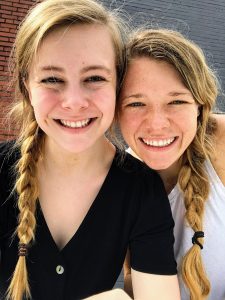
Name: Christina Johansson
From: Irmo, South Carolina
Votes: 0
In the Driver’s Seat
Christina Johansson
Driving and Traffic School
11-17-20
In the Driver’s Seat
Learning how to drive is such an exciting thing to learn as a teenager. Being able to drive is more to us, as American teenagers, than simply getting your license and being capable to operate a vehicle. A temptation with society is the mental habit of linking practical concepts with social statuses. We link college with intelligence, money with success, and our driver’s license with independence. However, 34,000 people on average die per year due to car accidents. More than disease, heart failure, and war; driving has been the leading cause of death for all age groups in America.
To the American teenager, driving indicates this milestone of “growing up”. Having your license and no longer needing your parents to drop you off places distinguishes you from being a “child” to an “independent teenager”, which is why many are so desperate to obtain it at younger and younger ages. We tie maturity, desirability, capability, independence, and all other social status along with our newly fashioned DMV picture. However, these social facades distract us from the burden that’s bonded to your license: responsibility. The moment we get behind the wheel of our car, suddenly our life, and the lives of our loved ones, are not our only concern. We are responsible for the wellbeing of all anonymous drivers we interact with. Our recklessness can cause others, and their families, detriment. Driving is not an idealized social status; it is a dangerous asset to our lives. Without knowledge on driving practical safety, style (defensive versus offensive), and road practicality, more and more Americans will be the victim of fatal carelessness. You and I, or our family members, could be the next victim of someone else’s failure to take their responsibility as a driver seriously.
There are three steps that can be taken to reduce the number of deaths related to driving: education, practice, and habits. First, we must educate our drivers on how to adjust their driving style depending on the psychology of others, and how to practically drive in relation to circumstances that surround them. What I mean by this is there are two driving styles: defensive and offensive. Defensive driving is detached from emotion and non-obtrusive to other drivers. Defensive drivers are aware of their surroundings and they accommodate themselves to the other drivers. Offensive drivers are exactly the opposite. Offensive drivers demand that others accommodate to them. Offensive drivers are easily emotionally aroused, and they use their driving as an outlet to express whatever emotion they may be feeling (most explicit example: road rage).
Next, there is practice. We must allow our drivers plenty of practice in all situations. Especially our new drivers, there is a need for them to be exposed to highways, road work, school districts, etc. Only by practice will the driver be capable of recognizing social ques (like defensive vs offensive drivers) and be able to accommodate themselves accordingly.
Finally, establish good habits. Be responsible and keep potential distractions limited, like music, friends, and food. Be mindful of what you allow yourself to do and remember how others are at stake as soon as you get behind the wheel. Wear your seatbelt at all times and keep music volume at a minimum. Be attentive and courteous, and let your habits be reflections of that.
Personally, I have known someone who was a victim of another’s irresponsible driving. Aaron was a good man, husband, father, and brother to all those around him. Earlier this year, Aaron was pulling past a stop sign when he was hit by another driver that was going 75mph and blew past the stop sign in front of him. Aaron was tragically killed in this collision and his wife and three children are left to live their lives with a hole in their hearts. On the day of the accident, Aaron miraculously decided last minute not to bring his three-year-old son with him to work. If he had not decided against bringing his son, then this boy would have joined Aaron in being immediately killed by the collision.
Driving is not a social status. Getting behind the wheel commands a large gravity of responsibility and realization that you are not only looking out for your own life, but the lives of all others around you. We must all do our part in being educated, practiced, and establishing good habits (such as not speeding or being distracted). We must be cognizant of our social and practical surroundings, driving defensively and cautiously at all times. If each of us do our part, as the American people, we can decrease the number one killer of our people. We can protect the lives of our brother, father, husband; how Aaron should have been protected. Aaron’s death does not have to stay a stagnant and tragic loss, it can enlighten you and I to realize that we are all someone’s daughter, son, father, mother, husband, wife, or friend. Protect other anonymous drivers in the way you would protect your own family.
Be responsible; drive safe.